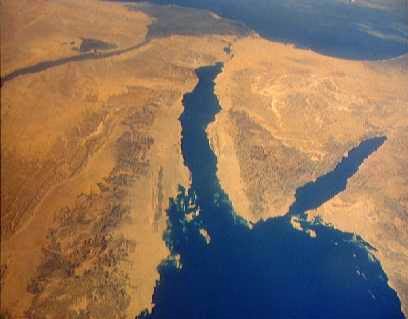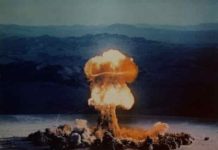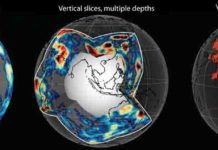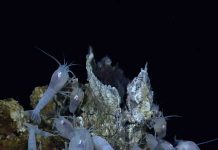
GEOMAR researchers specify models for the birth of the youngest world ocean
Pacific, Atlantic and Indian Ocean, with the land masses of the Americas, Europe, Asia, Africa and Australia in between – that’s how we know our earth. From a geologist’s point of view, however, this is only a snapshot. Over the course of the earth’s history, many different continents have formed and split again. In between oceans were created, new seafloor was formed and disappeared again: Plate tectonics is the generic term for these processes.
The Red Sea, where currently the Arabian Peninsula separates from Africa, is one of the few places on earth where the splitting of a continent and the emergence of the ocean can be observed. During a three-year joint project, the Jeddah Transect Project (JTP), researchers at the GEOMAR Helmholtz Centre for Ocean Research Kiel and the King Abdulaziz University (KAU) in Jeddah, Saudi Arabia, have taken a close look at this crack in the earth’s crust by means of seabed mapping, sampling and magnetic modeling. “The findings have shed new light on the early stages of oceanic basins, and they specifically change the school of thought on the Red Sea,” says Dr. Nico Augustin from GEOMAR, lead author of the study. It has now been published in the scientific journal “Earth and Planetary Science Letters”.
It is, and was, undisputed that a continent is stretched and thinned out by volcanic activity before it ruptures and a new ocean basin is formed. The rifting occurs where the greatest stretching takes place. However, the detailed processes during the break-up are debated in research. On the one hand, one needs to better understand the dynamics of our home planet. “On the other hand, most marine oil and gas resources are located near such former fracture zones. This research can therefore also have economic and political implications,” says Professor Colin Devey (GEOMAR), co-author of the study.
Until now, conventional knowledge said that a continent is breaking apart more or less simultaneously along an entire line, and the ocean basin is formed all at once. The Red Sea, however, did not fit into this picture. Here, a model was favored with several smaller fracture zones, lined up one after the other, that would unite gradually, which in turn would lead to a relatively slow emergence of the ocean during a long transition phase. “Our studies show that the Red Sea is not an exception but that it takes its place in line with the other ocean basins,” says Augustin. The previous picture we had of the ocean floor in the Red Sea was simply corrupted by salt glaciers. “The volcanic rocks we recovered are similar to those from other normal mid-ocean ridges,” says co-author Froukje van der Zwan, working on her PhD as part of the JTP.
During the early formation stages of the Red Sea, the area was covered by a very shallow sea that dried up repeatedly. This created thick salt deposits that later on broke apart with the continental crust. Over geologic time periods, salt shows tar-like behavior and begins to flow. “Our new high-resolution seabed maps and magnetic modeling show that the kilometer-thick salt deposits, after the break-up of the Arabian Plate from Africa, flowed like glaciers toward the newly created trench and thus over the oceanic crust due to gravity,” says Augustin. Since these submarine salt glaciers do not cover the rifting zone uniformly over the entire length, the impression of several small fracture zones was created.
The consequences of this discovery are profound: For one, there really seems to be only one single mechanism worldwide for the dispersal of a continent. And secondly, is not yet known how much ocean crust is covered by salt. This questions the previous dating of the opening of the Red Sea. In addition, the volcanically active trench rift zone of the Red Sea, surrounded by salt glaciers, is host of a giant sink filled with a very hot and very salty solution. “Since the sediment in the salt solution is rich in metals, this so-called Atlantis II Deep is also of economic interest,” says co-author Devey. It is quite conceivable that over the course of the earth’s history similar deposits associated with volcanism and salt deposits were created during the opening phase of other oceans. “Thus, our studies help to clarify older research questions. But they also provide starting points for new investigations in all of the oceans,” says Augustin.
Original publication:
Augustin, N., C. W. Devey, F. M. van der Zwan, Peter Feldens, M. Tominaga, R. A. Bantan, T. Kwasnitschka (2014): The rifting to spreading transition in the Red Sea. Earth and Planetary Science Letters, 395, http://dx.doi.org/10.1016/j.epsl.2014.03.047
Note : The above story is based on materials provided by Helmholtz Centre for Ocean Research Kiel (GEOMAR)










